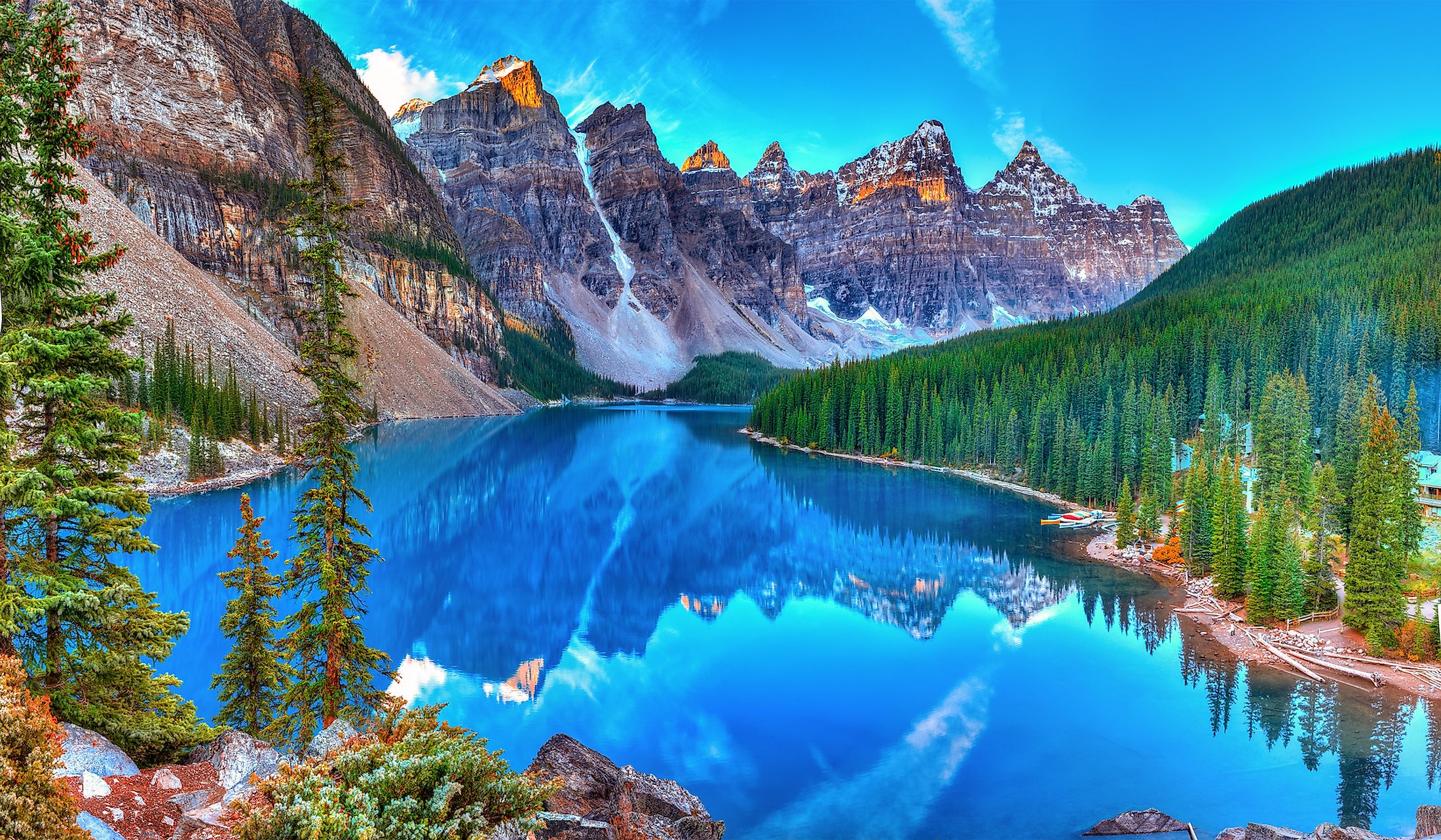
Valley Of The Ten Peaks, Canada
The Valley of the Ten Peaks is in Banff National Park in Alberta, Canada, in the Canadian Rockies. The park is 180 kilometers west of Calgary, Alberta. The ten peaks are to be found above Moraine Lake. As their name suggests, these are ten jagged snowy mountain peaks adjacent to one another overlooking Moraine Lake, and casting their reflections upon its pristine blue waters. There are also many hanging glaciers nearby that add to the surreal vista, which is said to be nature at its best. The best time to visit Moraine Lake is from the late summer through early fall, when many of the tourists have already gone home and the temperatures are still not too cold. Summertime is crowded, as it does offer more outdoor activities and warmer weather.
Visiting The Valley

In the 2004-2005 season, approximately 3,927,557 tourists visited Banff National Park. This figure might not be true of Valley of Ten Peaks but no figures are available for exact areas within the park alone. What is true is that tourists flock to Moraine Lake in large numbers in the summertime to experience its incredible vistas. In fact, a trips here have been described as experiences of a lifetime. The park is easy for the average tourist to reach by car from the Banff townsite. From there, the valley itself is accessible by way of the Moraine Lake Road inside the park. The Trans-Canada Highway also passes through the park in an east -west direction. Still, one must remember that a park pass is required to enter Banff.
Moraine Lake and the Valley of Ten Peaks is one of the most stunning destinations inside of Banff National Park, and the area also houses the third highest mountain peak in the Rockies. Moraine Lake has crystalline, pristine, emerald-hued waters. Thereupon them, the area offers opportunities for canoe rentals, sightseeing, photography, walking, and hiking. The breathtaking and gorgeous scenery alone is worth the trip, with camping and climbing also being permitted in outlying areas for extra incentive. There are other similar destinations nearby to the area, such as Larch Valley, Louise Lake, Sentinel Pass, and Eiffel Lake, which also feature campgrounds. A large glacier is also nearby and, in the wintertime, Moraine Lake Road becomes a destination for cross country skiers.
Wildlife In The Area

Moraine Lake and the Valley of Ten Peaks are part of the Parks Canada system. The animals inside the park also roam the lake areas. On top of their food chain sit the wolves, coyotes, grizzly bears, and black bears, followed by cougars, lynxes, wolverines, and weasels. Non-predatory mammals in Banff include moose, river otters, elk, and deer, with Caribou being a more rare find in the park. Reptiles there include snakes and salamanders. Goats, sheep, beavers, porcupines, squirrels, chipmunks, foxes, pika and marmots abound in the alpine regions. Birds to be seen include jays, woodpeckers, nutcrackers, bluebirds, herons, mallards and birds of prey. Local fish list among them trout, salmon, daces, and sturgeon. Then there are, of course, such trees as aspens, willows, spruces, firs, and maples.
Threats To The Ecosystem

The park as a whole experiences negative human impact the same way as Moraine Lake and the Valley of Ten Peaks. Human impact has introduced non-native species of plants, mammals and fish. Many of these introduced species have become invasive, overrunning the native species in the park. Further problems have been discovered with endangered animals being ran over by vehicles on the Trans-Canada Highway. Conversely, wildlife in the area also pose a threat to those humans who get too close to bears, moose, cougars, snakes, and other potentially dangerous fauna. In the area of park development, this has been curtailed for ecological integrity, as environmental protection is now given priority over financial incentive.











